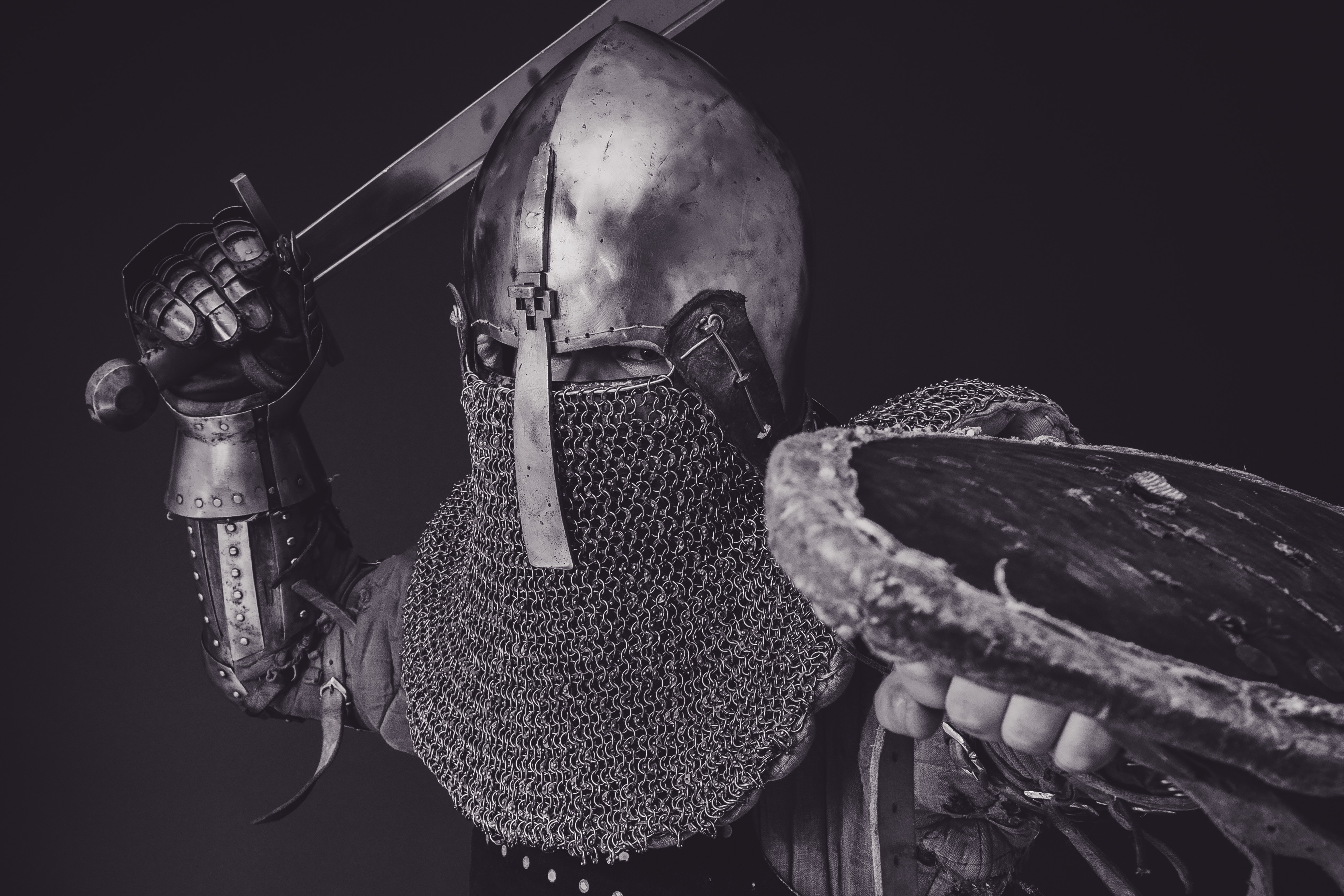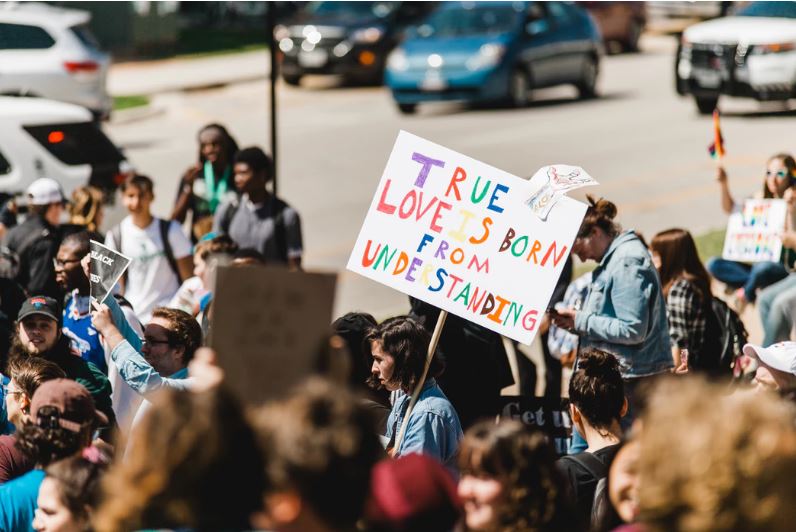The most disturbing aspect of the period of Christian history from 950-1350 is the initiation of the crusades by the church. In all subsequent history, the crusades have been a source of embarrassment to all who call themselves Christians. In light of the Gospel, it is hard to comprehend how the church could reconcile warfare with the standard of love set forth in Scripture. Indeed, in the early centuries of the church, Christianity and service in the military were incompatible. In a period of heightened moral and intellectual awareness, it is strikingly odd that the church would descend to such a level. For this reason, I felt compelled to research some of the causes and consequences of the crusades.
They were necessary to defend Christians and to reclaim the Holy Land.
When Pope Urban II preached the first crusade, his appeal was for the men of France to liberate their fellow Byzantine Christians from the Muslim Turks. The people of Western Europe feared these aggressive heathens, and the conquest of Constantinople by the Muslims was a military and political threat to their own security. Many were motivated by outrage and sincere devotion to defend their brothers and sisters in the faith. Centuries earlier, Augustine had developed the concept of a “just war,” which made violence morally neutral and not intrinsically evil. Since Jerusalem belonged to the Christians, the reasoning went, reclaiming it from the Turks was actually an act of defense, not of attack. So, the first crusade could be justified. But what couldn’t be justified were the results:
En route to the Holy Land, crusading mobs destroyed Jewish communities in the Rhineland, raping, plundering, and murdering. And in the Holy Land, even Muslim noncombatants, women, and children, were slaughtered. In the fervor of a crusade, the noble end justified the ignoble means. 1
They were caused by a longing for adventure and purpose.
It is obvious that not everyone who went on a crusade was a Christian. Many joined the crusades out of a desire for adventure and conquest. It must be remembered that many crusaders were of Teutonic background, and the thrill of invasions was a carry-over from their culture. “It was a robustious age in which life was cheap, warfare chronic, and for many…the daily routine drab and sordid.” 2 In a time of pestilence and death, many were seeking a purpose to life and a reason for dying. They readily rallied behind a cause that was bigger than life. Though the nobles who fought forfeited their property to finance their trip, the common man would often be released from his obligations by participating in a crusade and had the opportunity to start life over in exotic new places.
They were a result of individuals seeking forgiveness.
The religious and moral awakening of this period had a profound effect on Western Europe. It was the desire for purpose of life that drew many into the monasteries. “Christians of the day believed…that the salvation of their souls was to be best attained by the monastic road.” 3 For those who were unable to enter into the monastic lifestyle, participation in a crusade brought the forgiveness and wholeness of life which they were seeking.
Medieval men and women, especially in the twelfth and thirteenth centuries, were obsessed with their sinfulness. They felt themselves locked in a world of sin, a world from which there was only one escape: renouncing the world entirely and going into a religious community.
Penance was available, of course, but one had to pay back to God an equivalent of the sin committed. Medieval Christians instinctively knew nothing they could do – crawling on their knees to Rome, standing in a stream for six months, whatever – could compensate for sin.
The indulgence simply said, “Such is God’s mercy, that he will treat your penitent act as though it were satisfactory (even though it is not).” Indulgences were an application of God’s love and mercy and grace to an uneasy conscience.
With an indulgence to go on a crusade, people didn’t have to enter the monastery. By traveling or soldiering, they could get on their way to heaven. 4
Who could resist the plenary indulgences offered by the Pope for taking part in a campaign? Martyrdom would bring only salvation.
They were an attempt to use earthly power to inaugurate the Kingdom of God.
Time and again in the history of the church, force of arms was used to convert heathen nations (Constantine and Charlemagne, especially). Early on the church had turned its focus from relying on the power of God to transform lives and to bring forth His Kingdom to a temporal type of power. From 500 to 950, the power of the Papacy was greatly increased, displaying the use of power that was at times diametrically opposed to the power of the Gospel. It is no wonder that in the 11th and 12th centuries they resorted to crusades to kill the heathen and the heretics and to bring about Augustine’s City of God. By this time, I would venture to guess, few knew the power of God intimately. They saw God’s power only as it was expressed through His temporal church. They knew no other way to accomplish His ends except through their own power.
The results of the crusades were many and varied. On the positive side, they increased missionary zeal (the missions to China were a direct result of the crusades), prompted a more intensive study of Islamic languages, contributed to commerce and trade by creating a market for products from the East, brought about a revival of Greek literature and Aristotelian logic (possibly a direct result of the conquest of Constantinople in 1204), stimulated curiosity and adventure, brought to the West extensive knowledge in mathematics, medicine, alchemy and astrology (from Muslim thinkers),5 and contributed to the freedom of many serfs (granted by the nobles prior to crusading).
One negative aspect of the crusade was the breach between East and West resulting from the sack of Constantinople in 1204. Interestingly, one of the principal reasons for this fourth crusade was to restore unity to the church, but the effect was just the opposite. The crusade crippled Byzantium, paving the way for its eventual fall to the Ottomans in 1453.
The crusades also permanently discredited the Popes.
“…the Fourth Crusade demonstrated that even Innocent III could not control the movement, and the subsequent failure and misuse of crusading for selfish political purposes seriously discredited the papacy…the popes were blamed for stirring up war among Christians, for embezzling funds collected for the war against the Muslims…using a crusade as a political expedient and as an excuse for levying taxes.” 6
Through use of the plenary indulgence, church discipline was broken down. Men who were released from their vow to go on a crusade were expected to pay for their pardon. It was only a short step from this to the sale of indulgences to finance crusades. The crusades also intensified the hatred of Muslims for Christians and “retarded the understanding of the Gospel.” 7
Conclusion: The Two Dangers Today’s Church Faces
There are two basic dangers that Christians must be wary of when threatened (either aggressively or passively) by anti-Christian forces: withdrawal or attack. The Eastern church responded to the Muslim attacks by conservatism, holding so tenaciously to traditions that they shunned anything new and dynamic. The Western church responded to the threat of the Muslims by attacking, assuming their own power to take control and to establish God’s Kingdom on earth. These same dangers exist today. For many years, Fundamentalists have held on to the music and worship styles of the past, fearing that anything new must be a compromise with the world. Liberation theology, with its emphasis on the use of force to initiate democracy (or socialism) and to achieve its ends, uses many of the same arguments given by the defenders of the crusades. More recently, those who are part of the pro-life movement have used similar arguments to justify violence at abortion clinics, and those who have been part of anti-government or anti-police protests have done the same. Some on the fringes of these movements have even condoned the killing of doctors who perform abortions or police officers or those of a particular race or political persuasion. These types of movements are generated by some of the same factors as the crusades. Some people are looking for adventure; most are seeking a cause and a purpose that are bigger than this life. They want a reason to live (and even die). There is still a tendency to have a martyr complex, thinking that being jailed for the cause somehow brings an extra measure of forgiveness of sins or sainthood. There is still a tendency to use earthly power to inaugurate the Kingdom of God.
If anything can be learned from the crusades, it is that they are counterproductive. Instead of bringing unity to the church and a greater appreciation of the Gospel, they divide Christians, erect a wall of hatred from non-Christians, and cloud the true message of the Gospel. The purpose in life must come from a vibrant, personal relationship with Jesus Christ, not a crusade. “The weapons we fight with are not the weapons of the world. On the contrary, they have divine power to demolish strongholds” (2 Corinthians 10:4).
The moral and intellectual resurgence during this third period of Christian history had a tremendous impact on Western Europe. But the crusades are an indication that the undermining ideology of the general population was far from Christian. It is little wonder that the church would suffer geographic loss, internal lassitude, confusion, and corruption in the centuries immediately following. And it will be little wonder when the American church suffers the same fate in the coming years.
Other “Lessons from Church History”: Part 1 — Part 2 — Part 3 — Part 4
END NOTES
1 Bruce L. Shelley, “How Could Christians Do This?” Christian History, Issue 40 — “The Crusades,” p. 17.
2 Kenneth Scott Latourette, A History of Christianity, Vol. 1 (San Francisco: Harper), 1953.
3 Ibid., p. 418,
4 Jonathan Riley-Smith, “Holy Violence Then and Now.” Christian History, Issue 40 – “The Crusades,” p. 45,
5 R.A. Newhall, The Crusades. (NY: Holt, Rinehart and Winston), 1963, p. 124-126,
6 Ibid., p. 99-109.
7 Latourette, p. 414.







